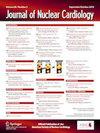Cardiovascular positron emission tomography imaging of fibroblast activation: A review of the current literature
IF 3
4区 医学
Q2 CARDIAC & CARDIOVASCULAR SYSTEMS
引用次数: 0
Abstract
Fibrosis is one of the key healing responses to injury, especially within the heart, where it helps to maintain structural integrity following acute insults such as myocardial infarction. However, if it becomes dysregulated, then fibrosis can become maladaptive, leading to adverse remodelling, impaired cardiac function and heart failure. Fibroblast activation protein is exclusively expressed by activated fibroblasts, the key effector cells of fibrogenesis, and has a unique extracellular domain that is an ideal ligand for novel molecular imaging probes. Fibroblast activation protein inhibitor (FAPI) radiotracers have been developed for positron emission tomography (PET) imaging, demonstrating high selectivity for activated fibroblasts across a range of different pathologies and disparate organ systems. In this review, we will summarise the role of fibroblast activation protein in cardiovascular disease and how FAPI radiotracers might improve the assessment and treatment of patients with cardiovascular diseases.
心血管成纤维细胞激活的PET显像综述。
纤维化是损伤后的主要愈合反应之一,尤其是在心脏中,它有助于在心肌梗塞等急性损伤后保持结构的完整性。然而,如果纤维化调节失调,就会产生适应不良,导致不良重塑、心脏功能受损和心力衰竭。成纤维细胞活化蛋白专门由活化的成纤维细胞(纤维形成的关键效应细胞)表达,具有独特的胞外结构域,是新型分子成像探针的理想配体。目前已开发出用于 PET 成像的成纤维细胞活化蛋白抑制剂(FAPI)放射性同位素,在一系列不同病理和不同器官系统中显示出对活化成纤维细胞的高度选择性。在这篇综述中,我们将总结成纤维细胞活化蛋白在心血管疾病中的作用,以及 FAPI 放射性racers 如何改善心血管疾病患者的评估和治疗。
本文章由计算机程序翻译,如有差异,请以英文原文为准。
求助全文
约1分钟内获得全文
求助全文
来源期刊
CiteScore
5.30
自引率
20.80%
发文量
249
审稿时长
4-8 weeks
期刊介绍:
Journal of Nuclear Cardiology is the only journal in the world devoted to this dynamic and growing subspecialty. Physicians and technologists value the Journal not only for its peer-reviewed articles, but also for its timely discussions about the current and future role of nuclear cardiology. Original articles address all aspects of nuclear cardiology, including interpretation, diagnosis, imaging equipment, and use of radiopharmaceuticals. As the official publication of the American Society of Nuclear Cardiology, the Journal also brings readers the latest information emerging from the Society''s task forces and publishes guidelines and position papers as they are adopted.

 求助内容:
求助内容: 应助结果提醒方式:
应助结果提醒方式:


